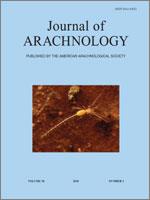Reports of Palpigradi from South American caves are rare, and no troglobiotic species have yet been described. This apparent deficiency, however, reflects merely a lack of reporting. Ten years of biospeleological surveys of 603 caves in 16 of the 26 Brazilian states, in bedrocks including limestone, quartzite, iron ore, granite, and gneiss, have led to the capture of 494 palpigrades, and specimens with troglomorphic characteristics have been found in Minas Gerais, Bahia, and Espirito Santo. Palpigrades have been found to be relatively more common in iron ore caves, and troglomorphic species apparently occupy cave habitats different from those occupied by edaphomorphic species. The description of the first troglobite species from South America is presented here. Eukoenenia maquinensis, new species, collected in the Maquiné Cave Minas Gerais, Brazil, has six blades in the lateral organs, seven pairs of setae on the propeltidium, six setae on the basitarsus IV (a single proximal sternal seta) and a singular chaetotaxy of opisthosomal sternites.
How to translate text using browser tools
1 December 2010
Eukoenenia (Palpigradi: Eukoeneniidae) in Brazilian caves with the first troglobiotic palpigrade from South America
Maysa Fernanda V. R. Souza,
Rodrigo Lopes Ferreira
ACCESS THE FULL ARTICLE

The Journal of Arachnology
Vol. 38 • No. 3
December 2010
Vol. 38 • No. 3
December 2010
Eukoenenia maquinensis
Neotropics
troglomorphic




